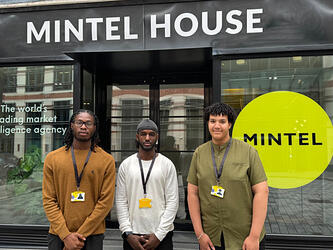Confirmit urges businesses to prepare for ‘barrage of data’ from IoT
The company claims that in order to prepare for the “barrage of data coming from the internet of things”, businesses must embrace next generation customer experience best practices in 2015.
Confirmit recommends a more automated approach to listening to customers that incorporates social and text analysis, as well as traditional methods, in order to simplify and streamline the entire customer experience management process.
According to a statement from the company, Gartner recently estimated that 4.9 billion connected ‘things’ will be in use by 2015, a number set to expand to 25 billion by 2020. Each of these devices, says Confirmit, will be capable of providing potentially invaluable customer insight that could be vital to commercial survival.
“Listening to the customer and responding to both positive and negative word-of-mouth feedback has never been so important and it’s going to get harder,” said Terry Lawlor, EVP of Product Management at Confirmit.
“Companies need to analyse all kinds of data: unstructured and structured, solicited and unsolicited. And they need to do this across multiple platforms, channels, countries and languages to help them identify and track issues that could make or break them. Sifting through this massive volume of diverse data has become a hugely complex and labour intensive task that is virtually impossible to achieve manually. By the time any insights are uncovered it is often too late to make any impact on the business.”

We hope you enjoyed this article.
Research Live is published by MRS.
The Market Research Society (MRS) exists to promote and protect the research sector, showcasing how research delivers impact for businesses and government.
Members of MRS enjoy many benefits including tailoured policy guidance, discounts on training and conferences, and access to member-only content.
For example, there's an archive of winning case studies from over a decade of MRS Awards.
Find out more about the benefits of joining MRS here.












4 Comments
Anon
11 years ago
I'm not sure this EVP understands how 'insights' are derived. It used to be that if you knew who you were asking (i.e a proper properly mounted survey) and what you were asking (a known questionnaire/topic guide approach), you might, just might, have a chance of finding something of interest. Just looking at a slew of random data is not even akin to standing in a stream panning for gold - most of which was 'fools gold'.
Like Reply Report
Christopher Horne
11 years ago
Just to play devil's advocate, I quote Richard Branson... “The idea that business is just a numbers affair has always struck me as preposterous. For one thing, I’ve never been particularly good at numbers, but I think I’ve done a reasonable job with feelings. And I’m convinced that it is feelings alone that account for the success of the Virgin brand in all its myriad forms”
Like Reply Report
Terry Lawlor
11 years ago
It’s good to see that this has stimulated debate, and I think it raises the issue of what “insight” really is. While structured, solicited data provided by traditional surveys can provide a great deal of insight, there is certainly room now for businesses to embrace a wider-reaching approach to understanding what is being said in the marketplace, including the more subjective sentiment that is being expressed. Text and social analytics do enable us to make sense of the huge quantities of “noise” out there, and to find the real gold which is hidden under the ‘fool’s gold’ mentioned above. While these new techniques do not replace traditional methods of capturing insight, simply writing-off all non-survey data as “random” risks missing out on information that can make or break businesses.
Like Reply Report
Anon
11 years ago
The difficulty here is the rather misleading IoT headline. IoT is not social listening, but rather mostly M2M (Machine to Machine) data. There is certainly mileage in social listening, but it's far from a done deal. And even less of a done deal is IoT. The promise of IoT data is that when everything around is hooked up to the Internet, a great deal of "passive" data will be collected, further obviating the need for "questions". I am sure it will come to pass, but's its a way off IMO. You need only look as far as the investments in Social Listening (Radian6, BrandWatch etc). The big difficulty still in the market is that "Market Research" budgets are still largely controlled by different buying centres from "Social Listening" .. so we've seen relatively little cross-fertilisation so far.
Like Reply Report